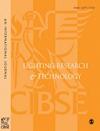Opinion: Wellbeing, mood and uncertainty
IF 2.2
3区 工程技术
Q2 CONSTRUCTION & BUILDING TECHNOLOGY
引用次数: 0
Abstract
It is frequently claimed that appropriate lighting can improve the wellbeing of people and change their mood. Such claims should be treated with caution, not because such effects do not occur but rather because such effects are matters of probability rather than certainty. There are three factors that contribute to the uncertainty. The first is simply a matter of definition. The Oxford Dictionary defines wellbeing as being healthy, happy or prosperous. This definition is so wide as to be useless for the identification of lighting effects. There is hardly any aspect of life that cannot contribute to an individual’s wellbeing, positively or negatively. With such a capacious definition it would be a miracle if the visual environment could not be shown to affect wellbeing so something more specific is required to be sure of any claimed effect. Mood is somewhat more closely defined as the way you are feeling at a particular time. This implies mood is a transient state of human emotion. Lighting can certainly influence mood. The second is the possibility of interference from aspects of life other than the visual environment. For example, a restaurant that is attractively lit for a romantic evening will not contribute to a positive mood if the couple cannot hear each other’s endearments. And it is not just the physical environment that matters. There is also the influence of human interaction. Entering a room filled with people one dislikes is likely to darken one’s mood, regardless of the way the room is lit. Mood is inherently labile. About the only situation when lighting can reliably change mood is when it causes visual discomfort. Then the salience of lighting increases and the probability of a negative effect on mood increases. However, very few lighting designers set out to cause visual discomfort. Claims of lighting’s beneficial effects onmood are generally framed in positive terms and it is these positive effects that are subject to interference. The third is the duration of the effect. The positive impact of lighting on mood is likely to be greatest for people unfamiliar with the installation, but how long will that effect be sustained. Familiarity is likely to reduce the impact of the lighting on mood, without any interference from other factors. Therefore, when considering claims of lighting enhancing wellbeing and mood, it is necessary to ask a number of questions. What is meant by wellbeing?What facets of mood are desired?Was mood only affected by the lighting in closely controlled laboratory conditions? How likely are these to occur in the real world? How will the lit space be used? Will people be familiar with the space? And so on. The main point to remember is that the further the outcome is from the operation of the visual system, the more likely it is other non-visual factors will interfere, or, to paraphrase the poet John Clare, the closer to the fountain, the purer runs the stream.观点:幸福感、情绪和不确定性
人们经常声称,适当的照明可以改善人们的健康,改变他们的情绪。这种说法应该谨慎对待,不是因为这样的影响不会发生,而是因为这样的影响是概率问题,而不是确定性问题。造成这种不确定性的因素有三个。首先是一个简单的定义问题。《牛津词典》将幸福定义为健康、快乐或富足。这个定义太过宽泛,以致于对灯光效果的识别毫无用处。生活中几乎没有任何方面不能对个人的幸福做出贡献,无论是积极的还是消极的。有了这样一个宽泛的定义,如果视觉环境不能被证明影响幸福感,那将是一个奇迹,所以需要更具体的东西来确定任何声称的影响。情绪的定义更接近于你在特定时间的感觉。这意味着情绪是人类情感的一种短暂状态。灯光当然会影响情绪。其次是视觉环境以外的生活方面的干扰可能性。例如,在一个浪漫的夜晚,一个灯火辉煌的餐厅,如果情侣们听不到彼此的亲爱之情,就不会有积极的情绪。而且影响的不仅仅是物理环境。还有人际交往的影响。进入一个满是自己不喜欢的人的房间,不管房间的光线如何,都会让人的情绪变暗。情绪本来就不稳定。只有当光线引起视觉上的不适时,才会可靠地改变情绪。然后,灯光的显著性增加,对情绪产生负面影响的可能性增加。然而,很少有灯光设计师打算引起视觉上的不适。照明对情绪的有益影响的说法通常都是积极的,而这些积极的影响往往会受到干扰。第三是效果的持续时间。对于不熟悉灯光装置的人来说,灯光对情绪的积极影响可能最大,但这种影响能持续多久呢?熟悉度可能会减少灯光对情绪的影响,而不会受到其他因素的干扰。因此,当考虑到照明能改善健康和情绪的说法时,有必要提出一些问题。幸福是什么意思?情绪的哪些方面是需要的?在严格控制的实验室条件下,情绪只受灯光的影响吗?这些在现实世界中发生的可能性有多大?如何使用照明空间?人们会熟悉这个空间吗?等等......要记住的重点是,结果离视觉系统的操作越远,其他非视觉因素就越有可能干扰,或者,用诗人约翰·克莱尔的话来说,离喷泉越近,水流就越纯净。
本文章由计算机程序翻译,如有差异,请以英文原文为准。
求助全文
约1分钟内获得全文
求助全文
来源期刊

Lighting Research & Technology
工程技术-光学
CiteScore
5.40
自引率
16.00%
发文量
69
审稿时长
>12 weeks
期刊介绍:
Lighting Research & Technology (LR&T) publishes original peer-reviewed research on all aspects of light and lighting and is published in association with The Society of Light and Lighting. LR&T covers the human response to light, the science of light generation, light control and measurement plus lighting design for both interior and exterior environments, as well as daylighting, energy efficiency and sustainability
 求助内容:
求助内容: 应助结果提醒方式:
应助结果提醒方式:


